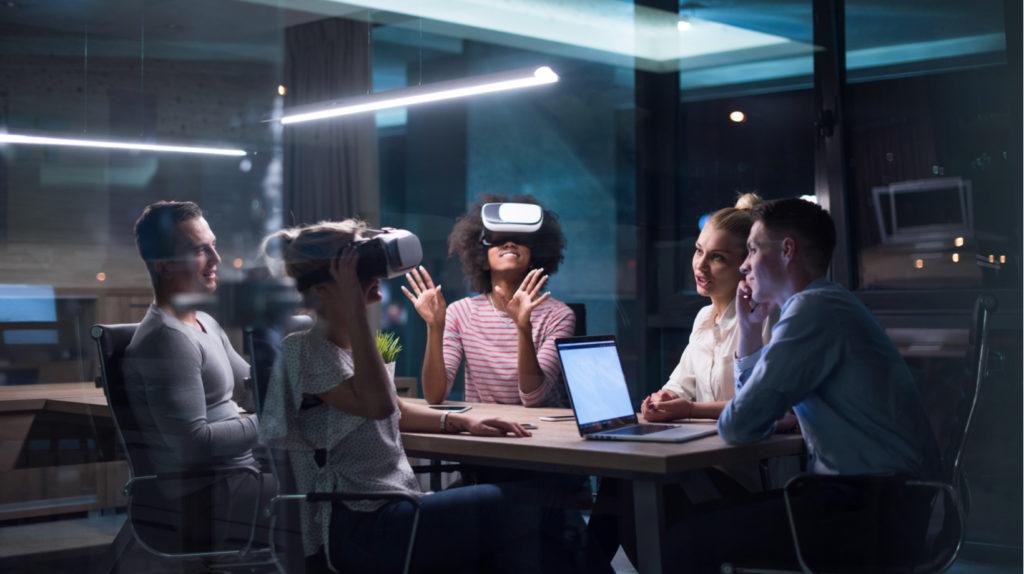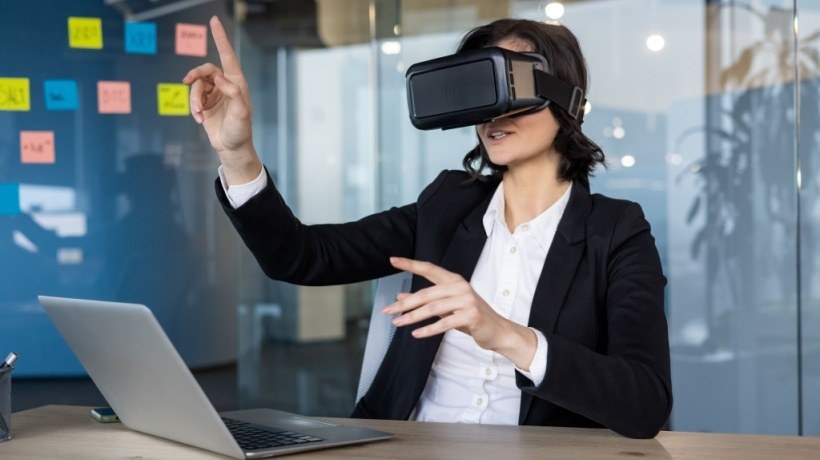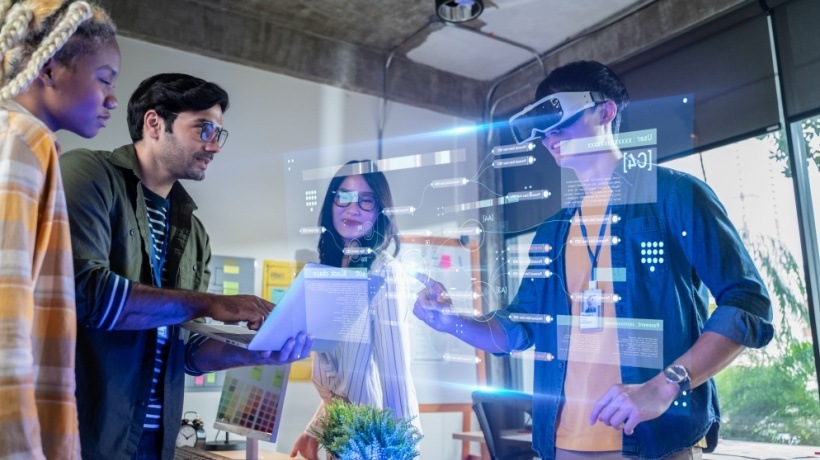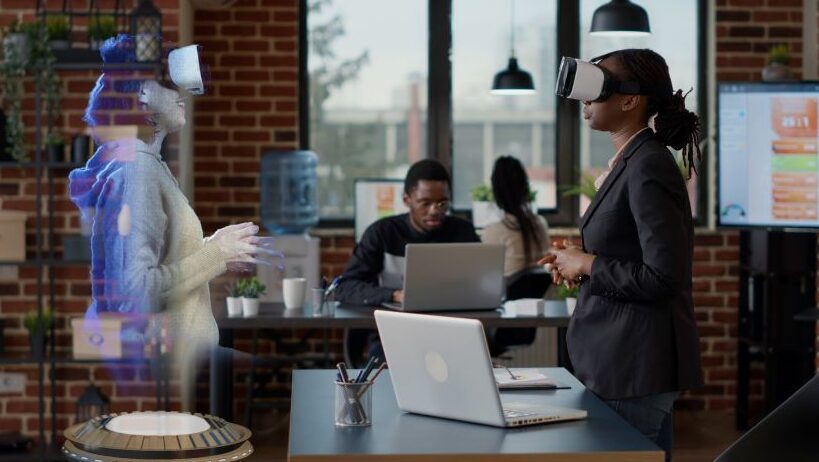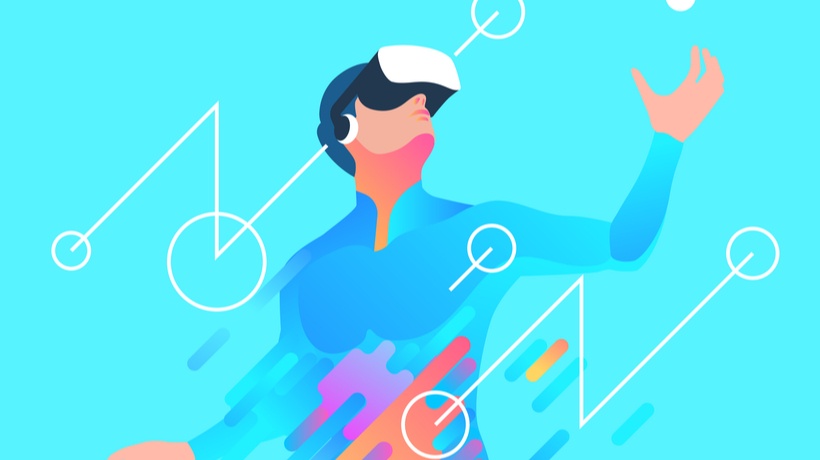Virtual Reality Training: 5 Benefits HR Managers Need To Know
HR professionals are incorporating Virtual Reality (VR) into many facets of their work—from recruitment and hiring to onboarding and Learning and Development. It has been conservatively predicted that 1 in every 3 businesses will be using Virtual Reality training by 2021, with some estimates even reaching a 50% adoption rate. Virtual Reality training has an expansive potential to enhance HR processes. Here are just a few of the many ways:
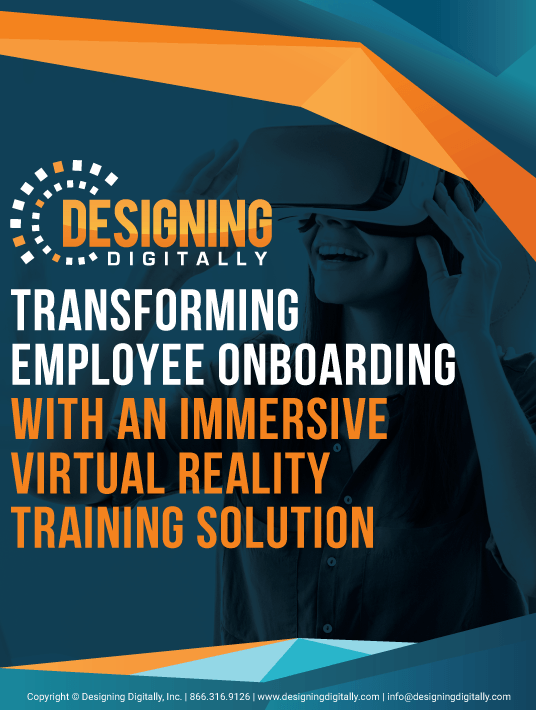
1. VR Trains More Effectively Than Video Or Text-Based Materials
VR has been proven to successfully teach a wide range of topics vastly ranging in complexity—from surgery to making a burger to handling dangerous chemicals. All training programs share a common goal: to create the desired change in behavior. The key to creating that change is providing training in a way that makes a lasting impression. In a recent study, participants experienced either a 360-degree VR video or a 2D video of a motorcycle ride. Two days later, the participants completed a memory test in which the VR group recalled twice as much information about the ride than the video group. In exploring the participants' experiences, researchers found that VR created memories that felt like something that actually happened to them (referred to as an autobiographical associative network), while video creates a memory of something that happened to someone else (termed an isolated episodic event). VR experiences become a part of a person’s collective memory, while videos create an isolated episodic event that has been proven to be far less impactful. Experts agree that VR creates a strong emotional reaction, thus creating a stronger memory. A joint YuMe/Nielsen study found that VR creates emotionally engaging experiences. They compared VR, 2D, and 360-video on a flat surface. It was found that VR received a 17% higher emotional reaction than 360-video and a 27% higher reaction than 2D.
2. Safely Train Employees For Dangerous And Stressful Situations
Keeping employees safe is every company’s primary duty, but traditional training methods are limited to theory when addressing workplace safety. Virtual Reality training gives participants the opportunity to learn in a virtual work environment and see simulated realistic consequences when a mistake occurs. The aviation and healthcare industries were among the first to adopt VR in training, and given the high stakes associated with even routine mistakes in these fields, it was a logical application of the technology. Workplace hazards are not confined to these fields, however. Workplace hazards occur in just about every sector of the workforce. The type of scenarios that adequately demonstrate safety issues are nearly impossible to create by using a textbook or even a classroom, and live training is expensive. Exposure to tough and atypical scenarios that Virtual Reality training can provide forces a learner to refine their reasoning and become good decision makers under stressful situations. NORCAT, a company that provides skilled labor training, uses Virtual Reality training for job roles involving dangerous situations and equipment. Among their catalog of training, they offer a multi-player VR simulation in which teammates perform life-saving measures inside of mine conditions. It is next to impossible to train in actual mine rescue situations, which only come into existence in the face of a disaster or unexpected situations and have life-threatening implications. Participants in the simulation must factor components like engineering specifications, oxygen, and timelines as they work together to perform the rescue. The participants of this training leave the exercise with deeply ingrained, life-saving knowledge that could not happen without the use of VR.
3. Employees See VR As A Benefit
Employees see a company’s adoption of VR as evidence that they are working with a company committed to innovation. This proves to be especially true among Millennials, who tend to be less interested in routine work than prior generations. When a company utilizes VR, they change the perception of even a low-level job to be viewed as working for a forward-thinking technology company. VR increases employee engagement and satisfaction when it helps them to improve quickly and make their jobs easier. The fast-food chain, KFC, has implemented a VR escape room training game titled The Hard Way that teaches new employees chicken-frying basics in 10 minutes. The game proved to be both fun and effective, decreasing the time it takes to master the process by over 50%. Even more importantly, the employees have reported that training via VR makes them see their job in a more positive light.
4. VR Training Lowers Employee Turnover
Feeling ill-prepared is among the top reasons that employees say they have quit a job. If an employee doesn’t feel adequately trained, they are very likely to seek employment elsewhere. It is important to build training programs that instill confidence in employees from the start.
The restaurant chain, Honeygrow, provides all new employees with two VR experiences—a tour of their restaurants and a food-safety game, within the first 2 days of training. These realistic activities created an understanding of expectations from both sides—presenting the restaurant’s expectations of the employee as well as giving the employee concrete insight into the role they are preparing for. Employees appreciated the foundational training they received in the supportive VR environment and reported feeling as increased excitement about their new career as they advanced in their training. The restaurant has increased employee retention since the roll-out of the program, and VR helps set the restaurant apart from other brands.
5. Get More Out Of Your Candidate Screening Process
Virtual Reality training can provide an opportunity for hiring teams to see candidates perform in the role they are seeking to fill before any decisions are made. By providing a controlled environment for a candidate to showcase their capabilities, measurable metrics are produced that aid in hiring decisions. This data provides a picture of a candidate’s capabilities, and this extends well beyond a resume or first impression.
Jaguar has implemented this strategy of gateway candidate testing via a free mixed reality app that invites candidates to learn about electric vehicles and play code-breaking puzzles. According to Jaguar, it attracts candidates that have an aptitude for problem-solving skills, and those that perform exceptionally well are accelerated through the hiring process.
From the candidate’s perspective, VR offers opportunities for them to explore a position and company more closely to be sure it is a good fit. Deutsche Bahn encountered a need to attract new employees due in part to a large percentage of their current workforce nearing retirement. The company began taking VR headsets to career fairs that gave potential candidates a virtual experience of their available positions. By using VR, the company began receiving not only higher-quality applicants from career fairs, but also at a rate 10 times higher than their previous hiring efforts.
With these benefits in mind, it is evident that implementing Virtual Reality training into your HR developments can bring many new opportunities for your business. Download the eBook Transforming Employee Onboarding With An Immersive Virtual Reality Training Solution to discover a method of perfect implementation and how to deliver the most effective virtual training. Learn why it is amongst the most innovative teaching tools and how it can help you transcend your business objectives.
